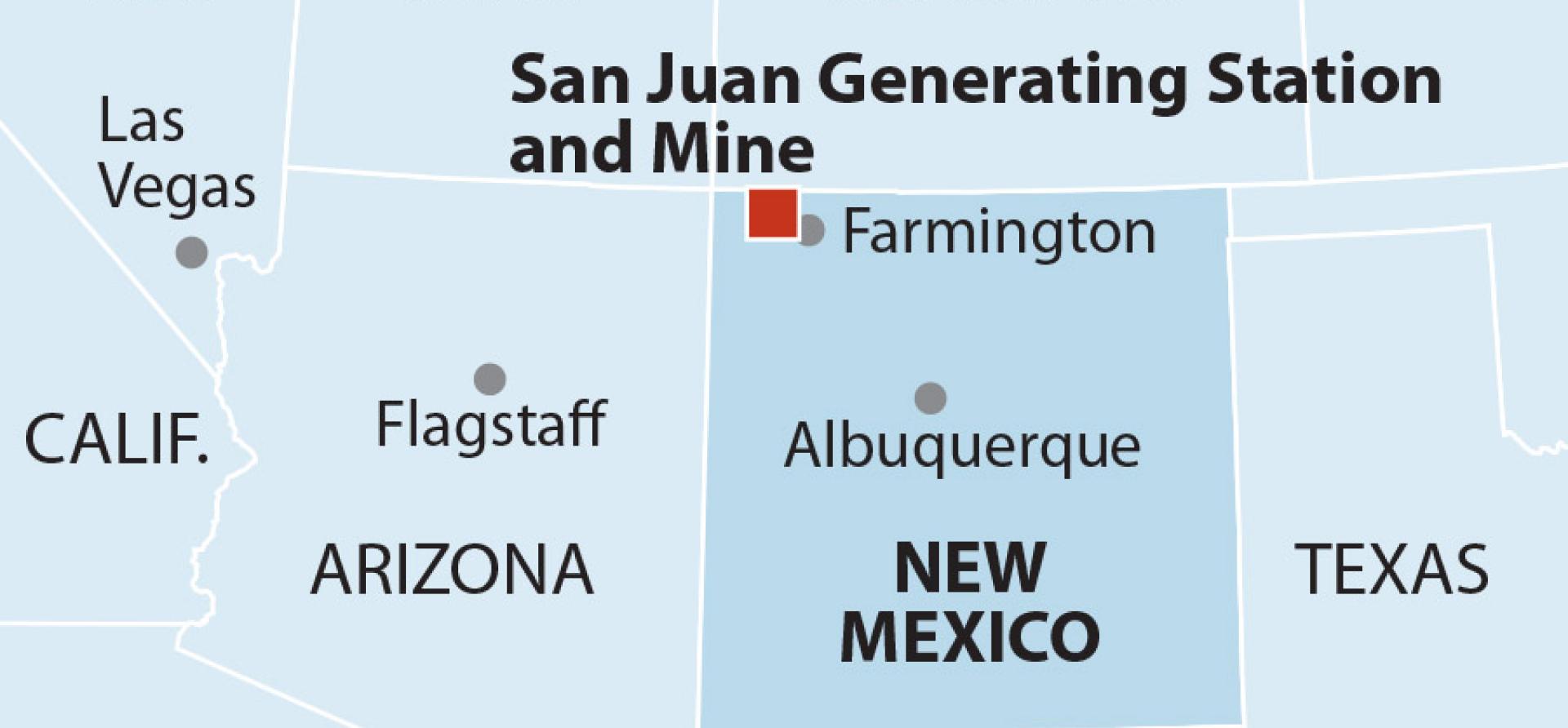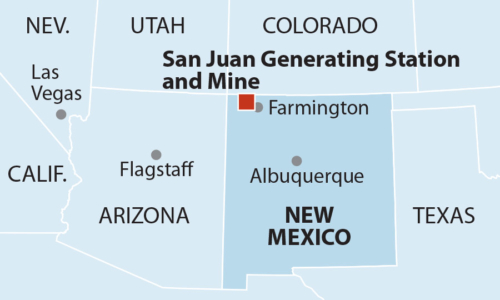IEEFA U.S.: Regulators see trouble with Enchant Energy’s carbon-capture project

 The big coal-sector news nationally this morning was that state utility regulators have given the green light for Public Service Company of New Mexico to abandon the 847-megawatt (MW) San Juan Generating Station (SJGS), one of the last coal-fired behemoths in the West.
The big coal-sector news nationally this morning was that state utility regulators have given the green light for Public Service Company of New Mexico to abandon the 847-megawatt (MW) San Juan Generating Station (SJGS), one of the last coal-fired behemoths in the West.
Discussion was perfunctory ahead of the 5-0 vote, as was the abandonment order itself.
The commission also voted 5-0 to approve a plan that would let PNM issue ratepayer-funded bonds to compensate the utility for its sunk costs at San Juan under a mechanism that purports to save customers money in the long run. That order included details that could serve finally to give Enchant Energy and the City of Farmington pause in their campaign to persuade the public of the supposed merits in its carbon-capture plan for the plant.
Here’s the pertinent passage from the PRC order:
“At this point in time the City of Farmington/Enchant carbon-capture project has not progressed to the point that it is clear whether that project will in fact come to fruition. Even then, the transfer of the departing SJGS participants’ interests in the SJGS plant will be a matter of negotiation under the various operative contracts between the SJGS participants.”
In other words, the core ownership exchange required for Enchant’s project to proceed—an outcome that has been sold by the company as a given—is not a done deal at all. In fact, it will probably never happen. PNM, which is the majority owner of the plant, has no interest in an unproven carbon-capture scheme, and has said so in the past as well as between the lines of its press release yesterday announcing the PRC ruling.
The very title of the PNM release was telling: “PNM announces continued progress in energy portfolio transition,” and the text of it made no bones about the utility’s intention to see all coal-fired power in New Mexico come to a close.
“Our focus will now turn to an early exit of the Four Corners Power Plant,” it said. The 1,550MW Four Corners, in which PNM holds a 9.53% stake, is supposed to stay up and running through 2031, but that date seems increasingly doubtful.
Julien Dumoulin-Smith, an energy-industry analyst at Bank of America, put out a research note today that said, “We’d expect the same steps as San Juan (i.e. securitization, abandonment, replacement, filings that the Energy Transition Act applies to and that pursues the lowest-cost replacement option).
The trajectory for coal-fired power in the southwest is as bad as it is anywhere nationally. An IEEFA report published Tuesday, Market Trends Are Pushing U.S. Coal Closer to a Reckoning, has the coal sector continuing its decline not just this year but in the years ahead at a rate so precipitous that coal could account for less than 10% of electricity generation nationally by 2025. That is a stunning drop considering that just five years ago, coal accounted for almost 40% of power production nationally.
Coal-fired power in the Southwest will not be spared. As detailed in a February IEEFA report, The Case (and the Mechanisms) for Utility-Company Reinvestment in Arizona’s Coalfield Communities, coal-fired plants all across the region are at increasing risk of retirement.
IEEFA has published a series of reports as well into the lack of economic and financial viability around the Enchant/Farmington carbon-capture pitch, most recently in a February study, Enchant’s Proposed CCS Project at the San Juan Generating Station: False Promises and Major Risks.
The ownership-transfer issue—that is, the question of whether PNM and other stakeholders will ever sign off on letting Enchant and Farmington have the abandoned plant and retrofit it in ways that may raise liability issues for previous owners—has been sometimes forgotten. It may prove a barrier on which the carbon-capture campaign will founder.
Karl Cates is an IEEFA transition policy analyst.
Related items
IEEFA report: Proposed carbon capture retrofit of San Juan Generating Station does not add up
IEEFA U.S.: Enchant Energy’s carbon-capture project is falling apart
IEEFA op-ed: Carbon capture plan for San Juan Generating Station is uneconomic pipe dream














